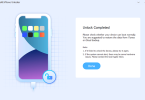
Deep links serve a purpose beyond being mere counterparts of traditional hyperlinks. They possess the ability to guide individuals from one webpage to another, whether it be on a computer or a mobile device.
However, their true significance lies in their ability to enhance the comprehension of app developers and marketers regarding their users. This encompasses gaining insights into the users’ origins and their current stage within the mobile buyer’s journey and finding ways to personalize their experience within the app, thus enhancing both in-app engagement and conversions.
Consequently, this article delves into the realm of mobile app deep linking, shedding light on essential considerations to bear in mind when utilizing this influential instrument.
Contents [hide]
What Does App Deep Linking Exactly Mean?
App deep links are unique hyperlinks guiding your mobile app user directly to relevant and specific content corresponding to their initial click. This content can be found within the app or another component or section. In essence, deep links eliminate the need for mobile users to install an app and manually search for the content they wish to view, ultimately enhancing their overall user experience.
Simply put, mobile users are given the convenience of accessing and exploring the intriguing content upfront before deciding whether or not to proceed with app installation.
Benefits of Deep Linking — Enhancing ROX through Remarkable Journeys
Deep links offer app marketers several noteworthy benefits.
1. Improving User Experience
Deep links make content easier to navigate. They also guide visitors away from the home page and into specific screens in your app, making it easy to access social media, mobile sites, etc.
2. Boost Usage, Engagement, and User Retention
Studies show that deep linking enhances important use metrics.
Deep link users had a doubled activation rate, retention rate, and frequency of app visits compared to non-users.
3. Helps Dormant Users in Reactivation
Many mobile app users install apps but lose interest over time. To re-engage these users, offering incentives and exclusive features through channels like emails, retargeting ads, and social media is effective. However, directing them to the app’s homepage can lead to disinterest again.
Deep linking solves this problem by directing inactive users to relevant in-app content without detours. For example, suppose a user stops using your app. In that case, a deep link can motivate them with a discount offer, taking them directly to the applicable in-app page and increasing the chance of conversion.
4. Enhances and Refines your Marketing Efforts
Deep links facilitate data transmission, allowing you to precisely identify the most effective campaigns across various channels or sources for acquiring, engaging, and retaining users. By attributing all sources accurately, deep linking empowers you to fine-tune and optimize your marketing strategy more precisely.
Furthermore, deep linking aids in generating higher revenue from your mobile marketing
campaigns. For example, suppose you are promoting a 20% discount on an in-app purchase. In that case, the deep link will seamlessly guide the user to the relevant screen, enabling immediate conversion. Minimizing distractions results in heightened conversions and increased revenue.
5. Increase App Discovery
Deep links in mobile apps can appear in results pages for search engines, much like website content, since Google crawls deep links in mobile apps. This raises the likelihood that new users will discover your app via search.
6. Give insight into the effectiveness of the campaign.
With the capability to transmit data, deep links provide a higher level of accuracy in determining the most prosperous campaigns and sources that effectively steer users toward your application or prompt downloads. Are the deep-linked ads proving fruitful?
Perhaps it’s through SMS or email promotions? Maybe social media platforms or referrals play a significant role. You can attribute all sources by employing deep linking and highlighting their contributions.
Step-by-Step Guide: How To Use It?
To implement deep linking in your mobile app, follow these steps:
- Map out URLs: Determine which website URLs will represent specific app pages. Not all links need to be mapped, so prioritize relevance to enhance user experience.
- Universal Links for iOS: Utilize Universal Links for deep linking in iOS 9.0 and above. Skip support for iOS 8.0 and below due to limited usage. Create a file on your website to inform Apple about the app’s ownership and link handling.
- Android App Links: Android supports App Links for deep linking. Update your AndroidManifest.xml file and create a file on your website to verify ownership.
Remember to promote your app extensively to direct users to the app and maximize the benefits of deep linking.
Deep Linking Offers Value in Various Scenarios

What are the use cases of deep linking? Let’s have a look at some most popular examples of when you can use it and benefit from it.
- App-to-app linking: Seamlessly navigate users from one app to another, providing easy access to specific content.
- Mobile web-to-app linking: Enhance mobile search results by swiftly redirecting users to relevant in-app content.
- Desktop-to-app linking: Engage desktop users to app content through deep links.
- SMS-to-app linking: Drive app engagement by sending messages with deep links to promote features or offers.
- Email-to-app linking: Personalize email communication by including deep links to relevant in-app content.
- Social media-to-app linking: Keep users engaged by directing them from social media platforms back to your app.
- Referrals-to-app linking: Encourage app downloads through personalized invites with deep links to specific content.
Voila, now you know all you need to start using deep linking like a pro marketer. Add it to your arsenal today and share how it works for you.






